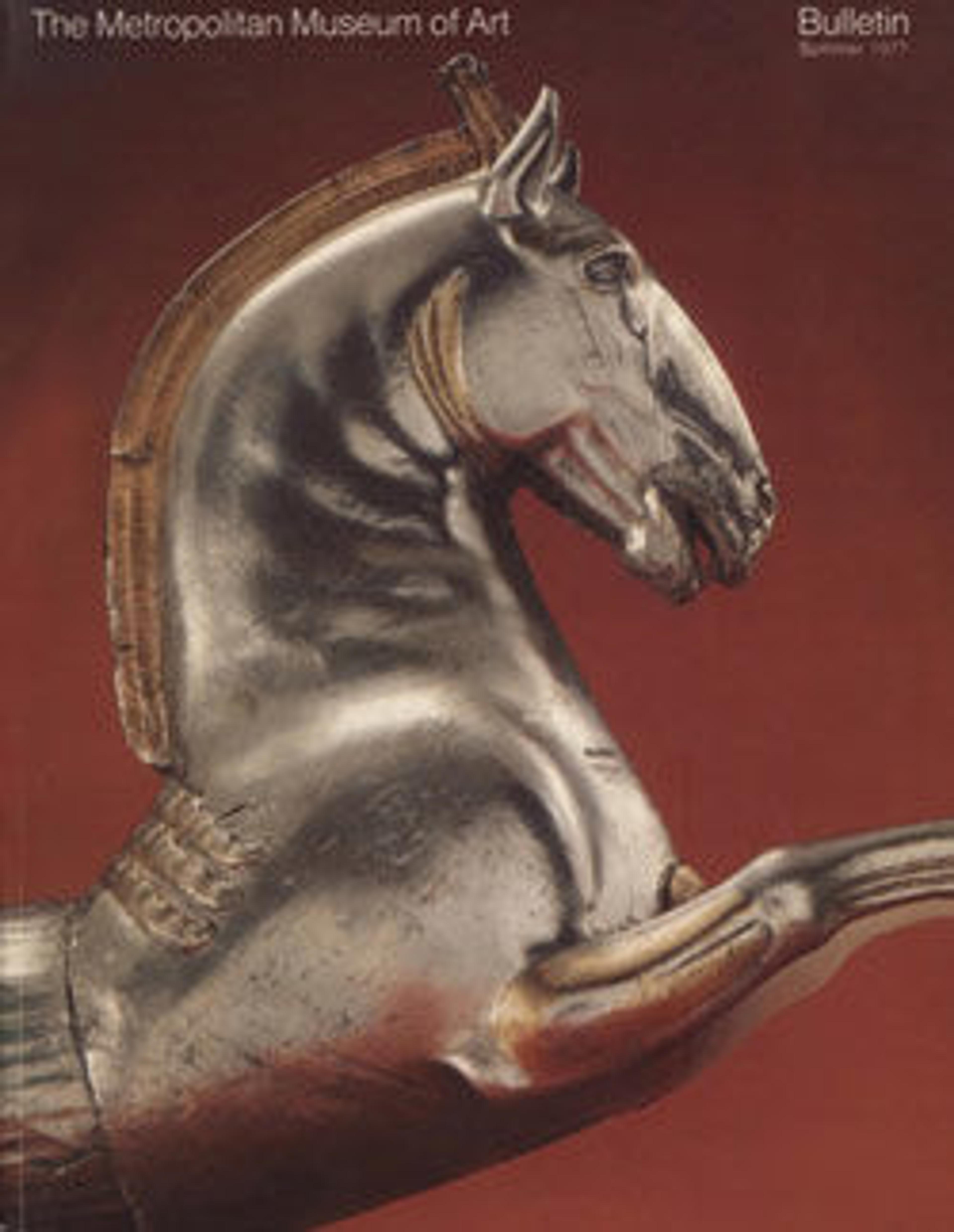Terracotta bell-krater (bowl for mixing wine and water)
Obverse, Orpheus among the Thracians
Reverse, libation scene
Orpheus, the best known of the mythical musicians, is associated with Thrace in the northernmost part of Greece. After he had descended into the underworld to find his beloved wife, Eurydice, and had lost her, he withdrew into solitude. Feeling rebuffed, Thracian women set upon Orpheus and killed him. Here he is shown seated on a rock formation and engrossed in his music. The central figure, wearing typical Thracian dress, identifies the setting, while the woman who holds a sickle in her left hand foreshadows Orpheus's fate.
Reverse, libation scene
Orpheus, the best known of the mythical musicians, is associated with Thrace in the northernmost part of Greece. After he had descended into the underworld to find his beloved wife, Eurydice, and had lost her, he withdrew into solitude. Feeling rebuffed, Thracian women set upon Orpheus and killed him. Here he is shown seated on a rock formation and engrossed in his music. The central figure, wearing typical Thracian dress, identifies the setting, while the woman who holds a sickle in her left hand foreshadows Orpheus's fate.
Artwork Details
- Title: Terracotta bell-krater (bowl for mixing wine and water)
- Artist: Attributed to the Painter of London E 497
- Period: Classical
- Date: ca. 440 BCE
- Culture: Greek, Attic
- Medium: Terracotta; red-figure
- Dimensions: 11 5/8 × 13 3/4 × 12 13/16 in. (29.5 × 34.9 × 32.5 cm)
- Classification: Vases
- Credit Line: Fletcher Fund, 1924
- Object Number: 24.97.30
- Curatorial Department: Greek and Roman Art
More Artwork
Research Resources
The Met provides unparalleled resources for research and welcomes an international community of students and scholars. The Met's Open Access API is where creators and researchers can connect to the The Met collection. Open Access data and public domain images are available for unrestricted commercial and noncommercial use without permission or fee.
To request images under copyright and other restrictions, please use this Image Request form.
Feedback
We continue to research and examine historical and cultural context for objects in The Met collection. If you have comments or questions about this object record, please complete and submit this form. The Museum looks forward to receiving your comments.
